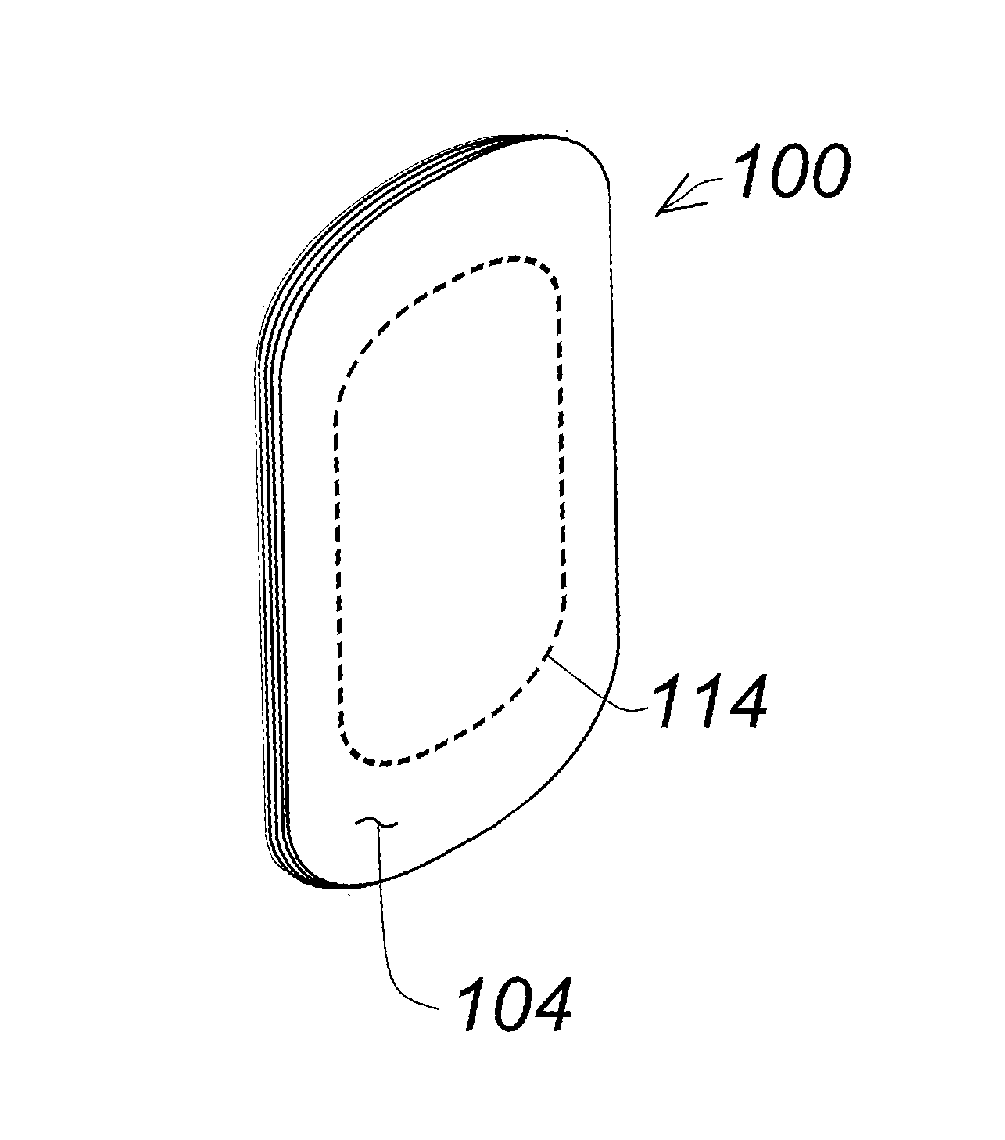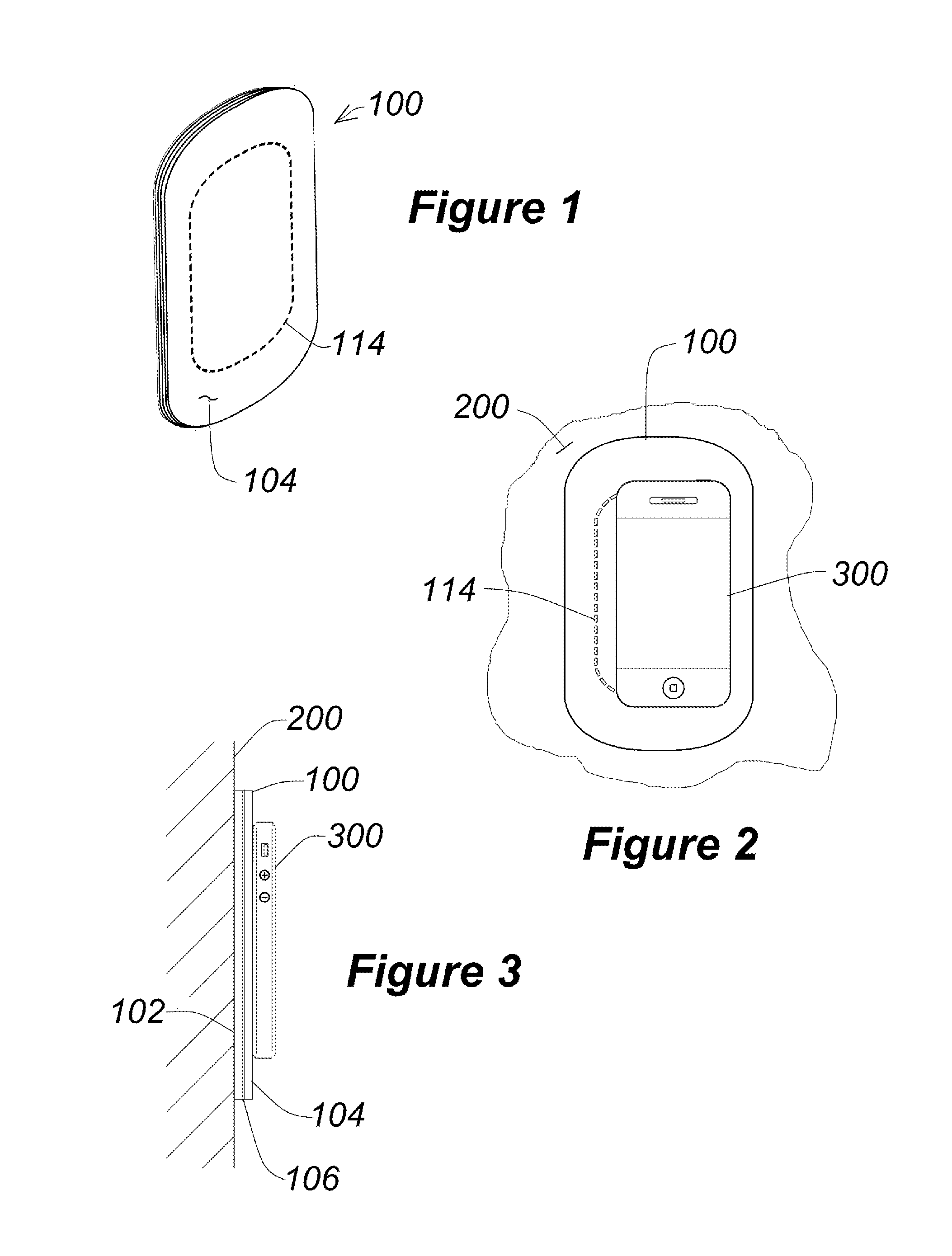Adhesive pad
- Summary
- Abstract
- Description
- Claims
- Application Information
AI Technical Summary
Benefits of technology
Problems solved by technology
Method used
Image
Examples
Embodiment Construction
[0023]Referring to FIGS. 1 and 4, an adhesive pad 100 according to an exemplary embodiment of the present invention includes a back adhesive layer 102, a front adhesive layer 104, and an intermediary layer 106. Also included are a back contact sheet 108 and a front contact sheet 112 which are each temporarily adhered to the respective faces of the adhesive sheets during shipping or storage of the adhesive pad.
[0024]The front and back adhesive layers are preferably each made of a homogenous oil-enhanced thermoplastic rubber polymer material (TPR). The preferred material is further described below, but a myriad of similar materials may be substituted therefore, so long as those provide equivalent adherence and removal performance. The qualities of this material may differ in each adhesive layer, as explained below. The front and back adhesive layers are permanently bound to the intermediary layer, preferably by an oil-based adhesive coating 106 there-between. The material of at least ...
PUM
| Property | Measurement | Unit |
|---|---|---|
| Fraction | aaaaa | aaaaa |
| Fraction | aaaaa | aaaaa |
| Fraction | aaaaa | aaaaa |
Abstract
Description
Claims
Application Information
 Login to View More
Login to View More - R&D Engineer
- R&D Manager
- IP Professional
- Industry Leading Data Capabilities
- Powerful AI technology
- Patent DNA Extraction
Browse by: Latest US Patents, China's latest patents, Technical Efficacy Thesaurus, Application Domain, Technology Topic, Popular Technical Reports.
© 2024 PatSnap. All rights reserved.Legal|Privacy policy|Modern Slavery Act Transparency Statement|Sitemap|About US| Contact US: help@patsnap.com










